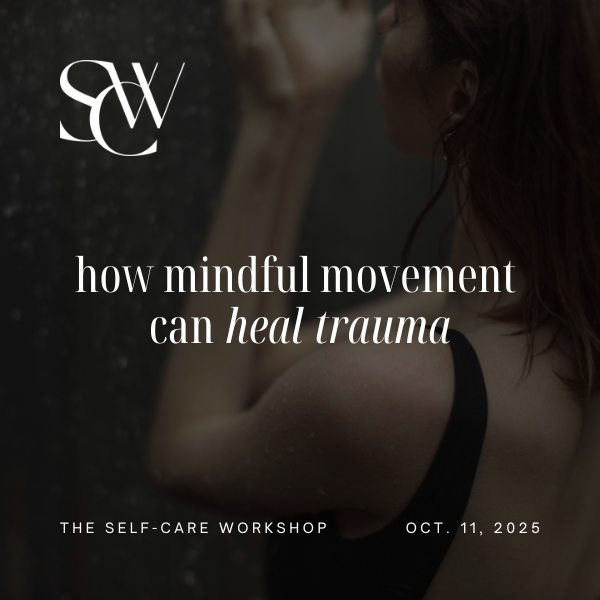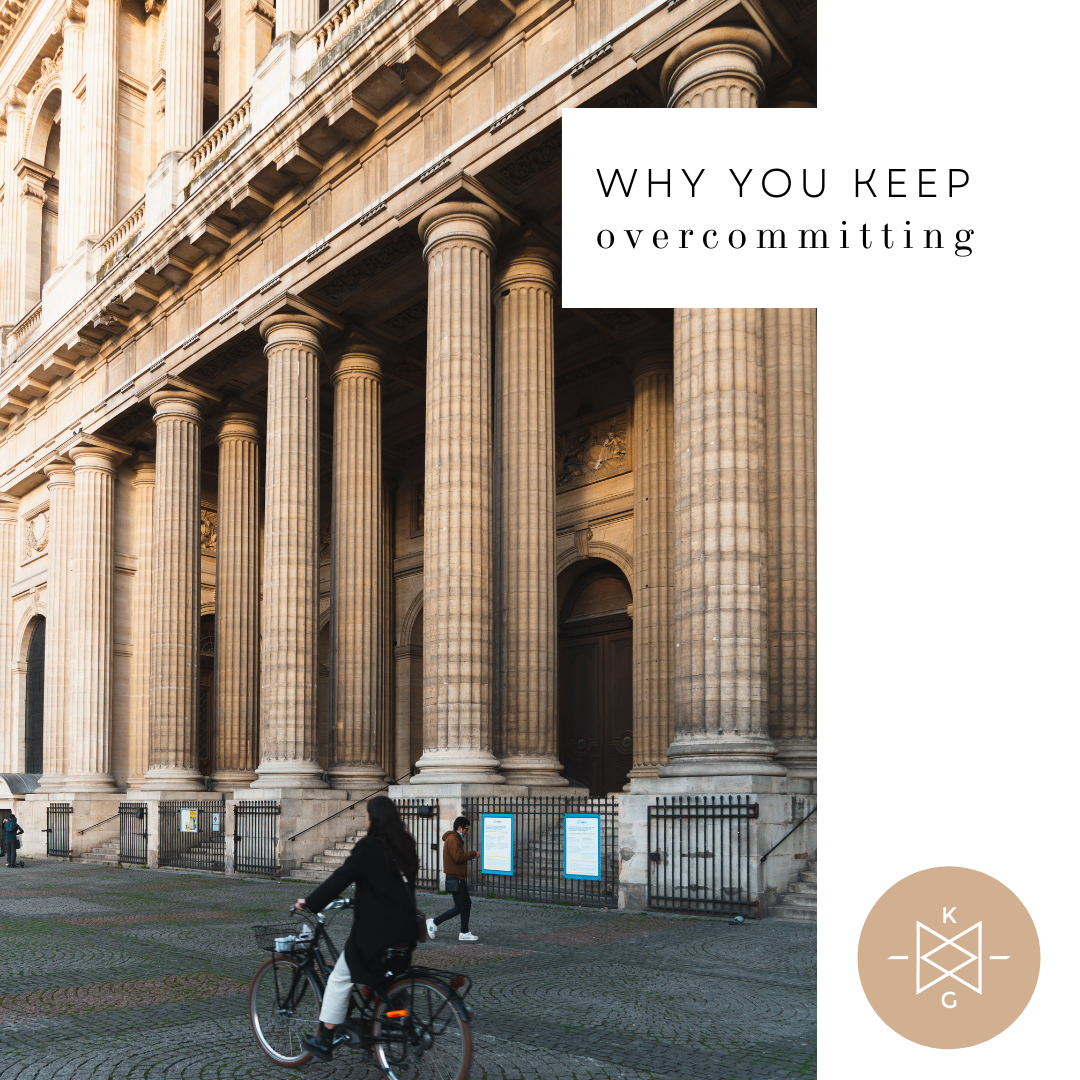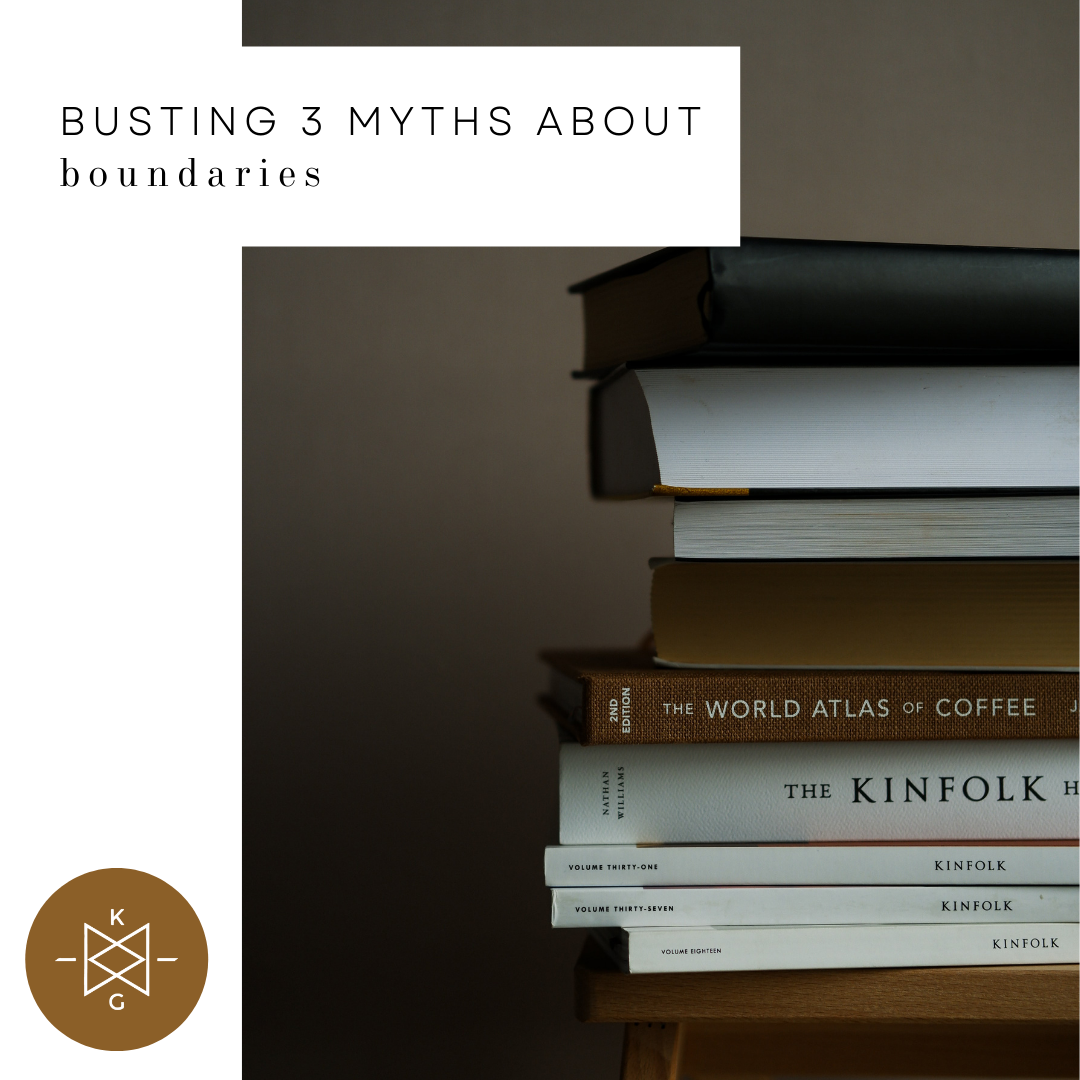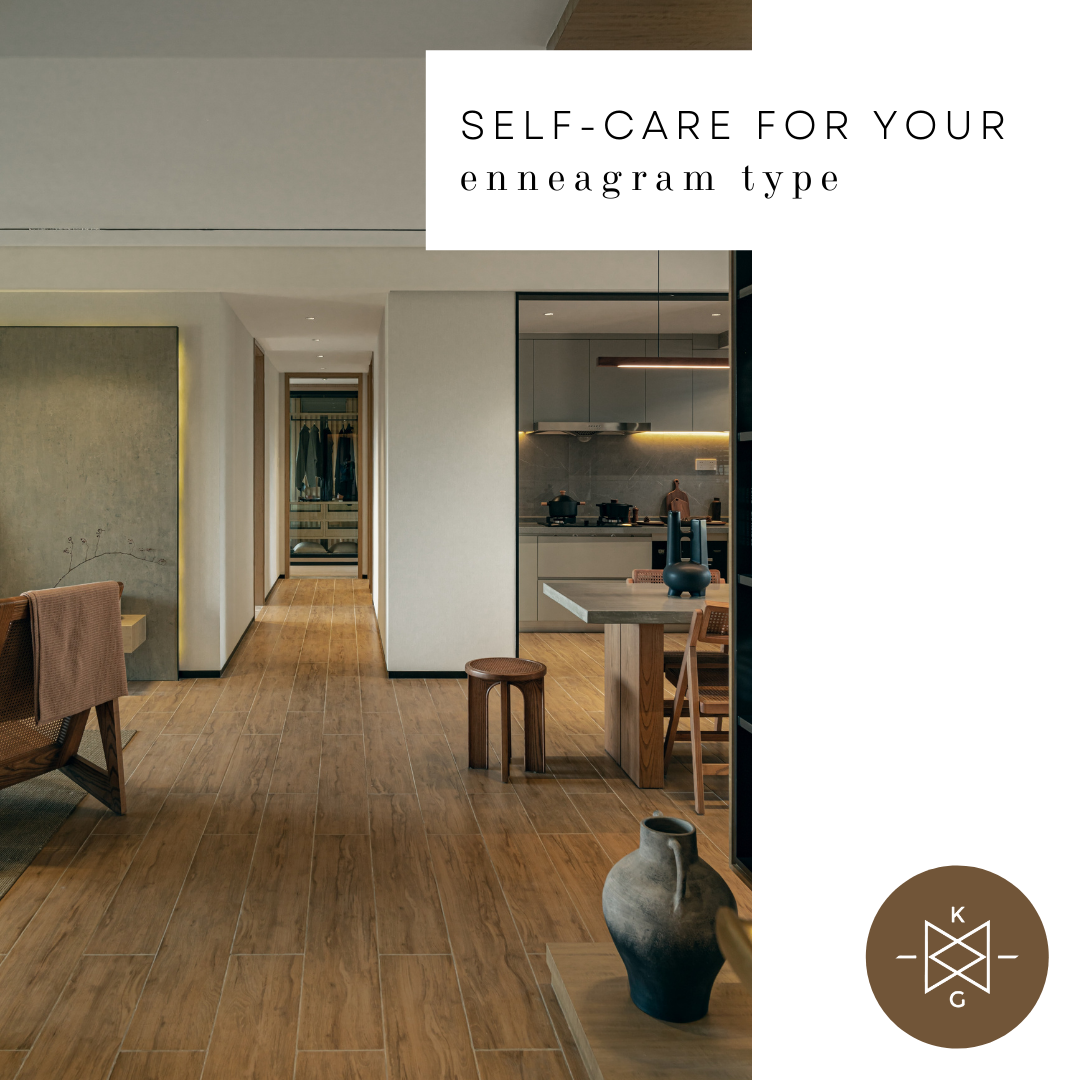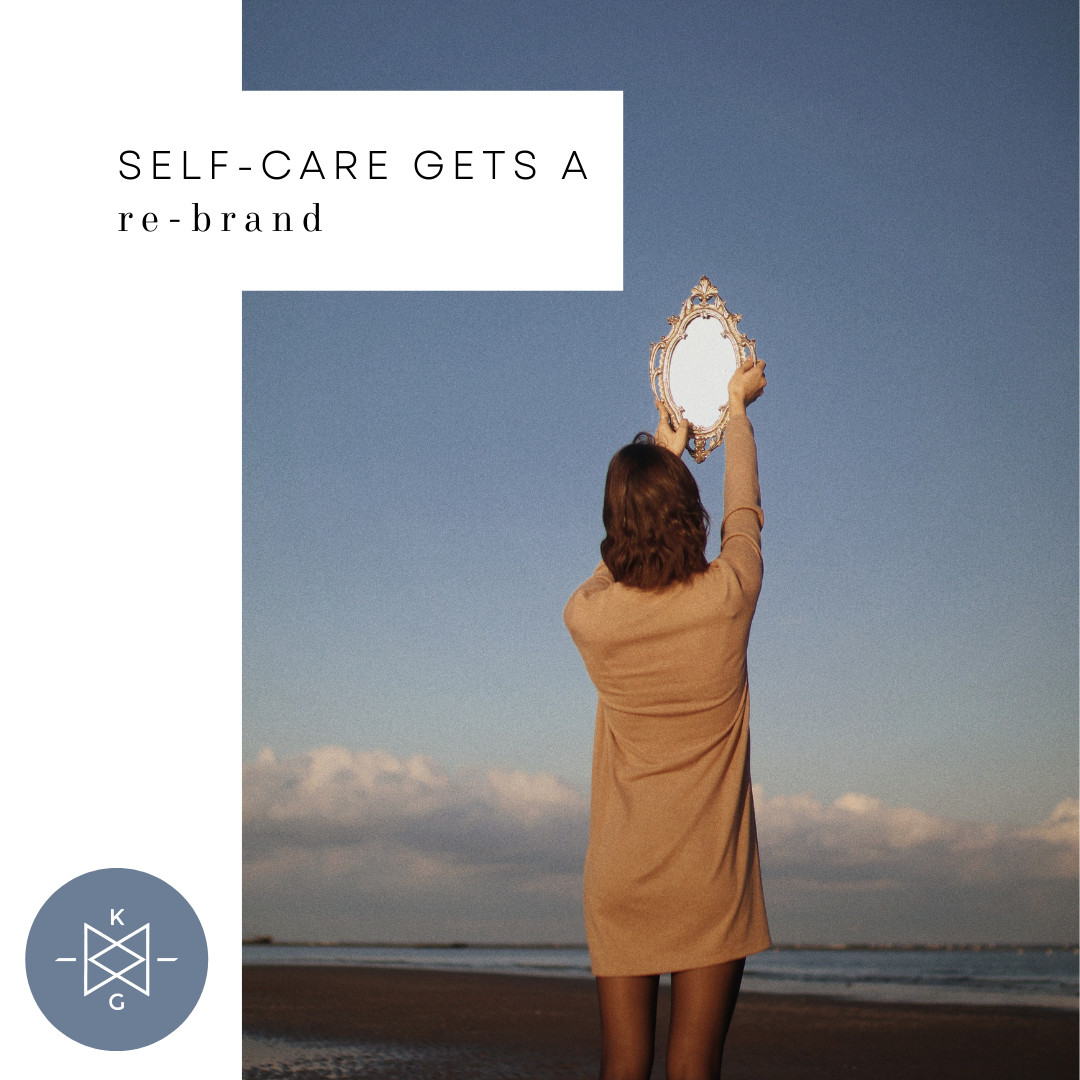
The Blog
Recently Featured
All Blogs
Why You Keep Overcommitting
“Be who God meant you to be and you will set the world on fire.”
- Catherine of Siena
I used to be a lot sweeter. I used to say yes most of the time. I used to jam pack my days into nights with everything from coffee/lunch meetings to work (obvi) to school to long phone conversations with friends in need to shows and dinners and…you get it—contained chaos.
Yet I worked so hard and simultaneously complained about feeling overwhelmed with little to show for it. “What gives?” I’d wonder this to myself more days than not.
Around age 34, I woke up to a cold, hard realization. It wasn’t pretty either. I realized I was overcommitting to others out of fear and obligation, and in the process, was under-serving myself. I was playing small in my life due one of two possible self-diagnoses (or probably both):
FOMO (fear of missing out)
FOBA (fear of being alone).
Basically, fear and scarcity were running the show, which is really about self-worth, not time-management.
I would drop everything to help others actualize their dreams, but when it came to pushing mine forward, I was the one missing in action. I’d rather procrastinate the deep work of creating my vision in order to pick up the pieces for others around me. It was an immediate, (if not false) hit of belonging straight to the old ego.
I also found I wasn’t as sweet as I’d been letting on. Behind the saccharine-laced veil, I was cynical and resentful, constantly comparing myself to others and critical of my inability to make something happen.
I started making some changes. I got more honest…less sweet. I started taking forensic inventory as to what I wanted and shifted my priorities around to facilitate those things. You know what I wanted? To be seen, heard, and to affect change in the world. Baby-step after baby-step, I started waking up to these desires—and honoring them. After all, no one else could ever do this for me. Sure, I could put support in place, but I had to do the work. And this “work" actually smelled like joy.
Bumpy at best, I’m still on the journey, yet I’ve found greater congruence and confidence in this new way. I’ve also found tons more time to appropriate to the meaningful relationships that matter most to me.
Oh, but there’s something else you should know. A reckoning of sorts took place. That hit I mentioned earlier? Well, at the core of all my “overwhelm” that kept me spinning out of control was a gaping hole I was desperately trying to fill: my needs for love, acceptance, and belonging.
I woke up to the unflattering reality that I was spread so thin in an effort to get these core needs met, and in the process, abandoned myself and my desires altogether leaving a bad aftertaste of resentment and utter discouragement.
If you find yourself constantly overcommitting and overwhelmed, I’ve got good news for you:
You can step off the treadmill at any time. You can choose something different—something resonant and true for you. Yet, In order to see your dreams become reality, you must be willing to let go of some extra baggage:
The belief that other people need you more than you need you.
Saying yes to too many social obligations to be nice and fit in.
Staying busy to avoid your needs and desires.
Toxic relationships that breed self-doubt.
Any reason that convinces you that you don’t have what it takes (aka fear).
Comparison with others (Is all that screen time really necessary?).
Playing the victim when setbacks arise (and they will).
My hunch is, you want to be seen too. I sure hope so—It’s your birthright! You weren’t created to hide behind the agendas of other people. You weren’t created to be nice. You weren’t even created to be liked. Let’s face it, you’re not for everyone. You were created to be the most beautiful, bold, and true YOU imaginable. Oh, she’s in there, alright. And she’s a force of nature. Yes, we need to see her.…
A New Approach to Clean Living
“The universe buries strange jewels deep within us all, and then stands back to see if we can find them.”
- Elizabeth Gilbert
Almost every Tuesday for the last seven years, I’ve been writing these posts. I’ve mentioned this before, but it bears repeating: I write them because I need them. I don’t presume you or anyone will read them, let alone actually enjoy them. If for some reason they resonate, I’m truly honored, but more than that, I’m aware that this is because you already know and value their message deep inside you. I’m not telling you anything new and profound—perhaps just reminding.
There’s this Bible verse, or phrase really, I grew up loving, “As deep calls to deep…” I’m not going to pretend to know or explain what that means in a Biblical context, yet I know what it means to you and I here.
When you feel resonance with a message, a quote, a song, or a walk in nature, it’s because the goodness of that truth and beauty already lives inside you. It’s a powerful energetic match being made. A sacred hallelujah! Or Aha! It’s the stuff we own. The stuff we honor. The stuff of value we savor and protect deep inside. It’s proof we’re all invited and interwoven into the rich tapestry of Grace.
Something I’ve been savoring lately is the beauty of simplicity and brevity. It’s an invitation into the now—that clean moment of consciousness—of fullness. Sure, it comes and goes in an instant, yet we are there. We are all there (if we want to be).
The abundance of that moment gently collapses over into the next like a domino. These moments are clean because they keep us tethered to reality, not somewhere cloudy in the past or future, both of which are tempting, yet tough to hold onto like a slick fish flailing for its freedom.
Creativity, though messy, happens in the fullness of the clean present. A massive part of my healing has been the creative process, namely writing. I’m convinced it’s part of your journey too.
And yes, I’m calling your bluff as you roll your eyes and silently retreat, “But I’m not creative!”
Back it up.
Part of your birthright as a human being is to make stuff, whether that’s a story, a way out, a pie, a speech, or a plan. You’re a born maker!
I believe a big part of waking up to the gorgeous truth of who we are is owning that creative birthright, and in doing so, moving from consumer to creator.
So what? Well, I want to co-create with you. I want to start conversations here that are short, meaningful, and most of all applicable for you in your now. I want to give you back some time to go get your hands dirty with intention.
I don’t want to walk through life in a sleepy haze. I don’t want to survive or dial it in. I want to crush it. Don’t you?
If you answered yes to that question (hopefully with feeling), you’re in the right place.
We’re going to be streamlining the weekly blog to give you more time, more tools, and hopefully more inspiration to start creating more of what you love.
You ready?
Love & Gratitude,
P.S. Want to dive deeper into self-care and the enneagram? Join the Practice today!
Busting 3 Myths About Boundaries
“Daring to set boundaries is about having the courage to love ourselves even when we risk disappointing others.”
- Brené Brown
If you’ve ever done therapy, you’ve probably learned a bit of the lingo. Words like self-care, codependent, empathy, projection, and boundaries to name a few, are all helpful as we excavate the depths of our inner worlds.
There’s also quite a bit of misunderstanding surrounding “therapy talk,” if you will—especially boundaries. So, I thought we should dig in a bit and gain clarity around the basics of boundaries and the three myths we get duped into believing about them.
If you’re a recovering people-pleaser like me, you’re well aware of how important boundary-setting is as well as integrating that scary little, “no” cringe-word into your regular vocabulary. If I made the hair on your neck stand up just now, I’m so glad you’re here. Read on.
As I’ve worked as a therapist in private practice for over a decade now, I’ve collaborated with countless courageous people longing to feel less resentful and more joyful in their lives. I’ve found that at the heart of this noble pursuit lies the invitation to set better boundaries.
Dr. Henry Cloud, author of the seminal book, Boundaries: When to Say Yes, How to Say No to Take Control of Your Life, describes boundaries:
“Boundaries define us. They define what is me and what is not me. A boundary shows me where I end and someone else begins, leading me to a sense of ownership. Knowing what I am to own and take responsibility for gives me freedom. Taking responsibility for my life opens up many different options. Boundaries help us keep the good in and the bad out. Setting boundaries inevitably involves taking responsibility for your choices.”
Brené Brown says it simply this way, “boundaries tell us what’s okay and what’s not okay.” They also help us teach people how to treat us.
If you’ve struggled with boundary-setting, you may be buying into a few myths surrounding them. Let’s unpack three of them:
Boundaries are selfish. I get it, if you grew up trying hard to please the important people in your life, boundaries may feel a bit self-centered. However, setting boundaries allows us to be truthful and generous at the same time. They actually allow us to give to others over time from a place of grounding and integrity. If you live and give without a margin of time, energy, and resources, you’ll eventually burn out and become resentful.
Boundaries will ruin my close relationships. Wrong again. Boundaries actually preserve the healthy relationships that matter most to you and weed out the ones that are toxic. How? As Dr. Cloud said, boundaries define us. They allow for us to show up more authentically in relationships by taking ownership of our choices and our identities. When we let our “no” be as good as our “yes,” we give others the opportunity to practice their own boundary-setting as well as deal with whatever comes up for them in their process around being told no. People-pleasing is really just dishonesty with lipstick on. Life-giving relationships must be built on truth and trust.
Boundaries are meant for the other person. This is a subtle misunderstanding. We often think we are setting boundaries for the other person in a relationship, however, it’s just the opposite. Boundaries aren’t a punishment for the other person. We set boundaries to protect ourselves and they should be set with our own needs at the helm. Boundaries are meant to protect our time, energy, emotions, joy, and overall health. They help create structure from which to live—a scaffolding of sorts. Think about a dog without a fence. They simply aren’t as happy as when they have the safety and structure of boundaries and the provisions that come along with them to enjoy. You and I have more in common with dogs than you might have known. ;)
So, the question to ponder this week is perhaps: what boundaries do I need to have in place to protect my joy and freedom?
P.S. Want to dive deeper into self-care and the enneagram? Join the Practice today!
Self-Care for Your Enneagram Type
“The Enneagram can help you understand who you were before the world told you who you should be.”
-Ian Cron
In order to truly care for ourselves, we must understand what we’re about, and what we need. The Enneagram can help us do just that. It can help you unpack the story you’ve been living out of for a long time and begin to discern whether or not it’s even true.
As I mentioned earlier, most of us are at the mercy of an old narrative that’s played over and over unconsciously for a long time. The first step in any self-care plan is simple: to wake up to what’s not working.
Because many of us spend more time and energy taking care of other people and what they need, this wake up call is often forced. Our health starts to suffer, our relationships fail, we experience depression and anxiety—or great loss.
Oftentimes, a crisis happens to wake us up to the reality that we are failing the most important relationship we have: the one with ourselves.
So, today, I want to give you a little self-care nudge, and tailor it to your dominant type.
Type 1’s: We all know you are master improvers. Yet this superpower can often get in the way when it’s your total sum of attention. Soften this tendency as you practice acceptance as opposed to fixing or resisting. Practice noticing what is right in the moment.
Type 2’s: Spending time alone to develop independent interests and greater autonomy is incredibly life-giving for type 2’s. This allows time for deepening your understanding of what you are passionate about, desire, and ultimately need apart from being needed and helpful to others.
Type 3’s: At the hub of the self-care wheel for type 3’s is simply this…SLOW DOWN. When you move at light speed and get so fixated on the path to success, you miss out on tons of life happening around you that can add to your overall quality of life and the creativity you are made to bring forth.
Type 4’s: One of the most important postures of self-care we can practice as fours is to separate our self-worth from the propensity to show up as special or extraordinary. When we fixate and strive in this direction, we miss out on the rest of what life wants to offer us. The most special and extraordinary gift we can give to the world is our authentic, essential self who is at rest with ourselves.
Type 5’s: A helpful awareness is to recognize how you detach from emotions and resort to the thinking mind. Staying present with feelings when they arise just two minutes longer each time brings balance for type 5’s.
Type 6’s: When you go to the worst-case-scenario, balance that out in your thoughts by also giving the best-case-scenario equal air time. This challenges the habit of constantly expecting the other shoe to drop by flirting with the idea that it might actually go really well.
Type 7’s: Becoming grounded in the present is everything for type 7’s. Because your attention is constantly going up and out, noticing when you do this is major. As type 7’s have an uncanny curiosity, wielding this superpower to explore the present moment is powerful.
Type 8’s: Journal around your perceived difference between weakness and vulnerability, unpacking your own timeline of having to be strong and in control for protection.
Type 9’s: As type 9’s natural tendency is to fall asleep to their desires, needs, and the action involved to get these met, it becomes necessary for you to then find a way to cultivate structure and practices that support the achievement of your goals.
P.S. Want to dive deeper into self-care and the enneagram? Join the Practice today!
Self-Care Gets a Rebrand
“The most common form of despair is not being who you are.”
-Soren Kierkegaard
One of the first questions I like to ask clients I work with takes some by surprise. Yet, it helps me steer our entire therapeutic journey. It’s simple…and very complex.
Tell me about your relationship with you?
Typically, after a long stare back at me like I have eight heads, they respond:
“Um…good question. I don’t think about it much.”
Exactly. How we relate to ourselves doesn’t typically stay top of mind. Others, more likely.
Yet how I relate to myself—how I treat, take care of, and talk to myself directly impacts everything else in life. Everything.
Why? Because I can’t live and give out of an empty vessel.
Two years ago, I hosted a Self-Care Workshop alongside two dear friends. (It’s coming back next month!) It was powerful because we realized how desperate our souls, especially as women, are for deep, true self-care.
I’m not talking mani-pedis and facials and wine nights with the girls. Those are all fabulous and can be nurturing, but let’s call a spade a spade. Those are forms of pampering…and pampering is a good thing! Yet we’ve sold self-care short if we deem them expensive beauty treatments and indulgences, especially right now. We approach it as a luxury—the stuff that ensues out of an abundance of time, energy, and resources.
And yet I firmly believe the fewer of those three resources we have, the more important it is to fight for self-care.
Actually, I’d like to rebrand self-care as self-compassion because I feel self-compassion looks more like true, life-giving self-care than spa treatments do.
So what is self-compassion?
Self-compassion is the practice of befriending ourselves. It’s learning to think of, talk to, and treat ourselves with kindness and compassion like we would a friend we deeply care about.
Yet self-compassion also takes notice of some important things.
It recognizes our hurt and suffering.
It moves towards this pain with a kind and open heart instead of trying to fix it, shame it, or numb it.
It is built on the foundation that the human condition is fragile and this frailty is the connective tissue that binds us all together.
Guess what? Whereas “self-care” in a traditional, indulgent context has been tough for most of us this past year, self-compassion is available and necessary at every turn. (Oh, and free!)
History has presented us these last two years with the perfect space and time to practice true self-care or self-compassion.
We’ve got an incredible opportunity right now to prioritize mental health and in doing so, dig deep, love ourselves, and love our people well. I love supporting you in this process.
